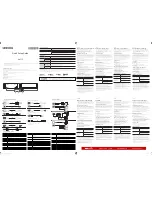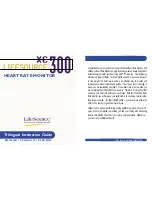
74
ENGLISH
Chapter 9 Monitoring NIBP
9.1 Introduction
9.1.1 The Oscillometric Blood Pressure Measurement
This device applies the typical non-invasive blood pressure measurement with the oscillometric method. A cuff is used
to occlude the artery by inflating it above the patient’s systolic pressure, the device measures the amplitude of pressure
changes with pulsation in the cuff as the cuff pressure decreases. The pulsations increase in amplitude, and reach a
maximum, then diminish along with the decrement of cuff pressure. The cuff pressure corresponding to the maximal
pulse amplitude approximates to the mean artery pressure (MAP), the cuff pressure at the pulse amplitude backward
reduced according to proper proportion is defined as systolic pressure (SYS), and the cuff pressure at the pulse amplitude
forward reduced according to proper proportion is defined as diastolic pressure (DIA)
9.1.2 The Oscilometric method vs. the Korotkoff Sound Method
Blood pressure measurements by the oscillometric method and Korotkoff sound method have good correlation with the
invasive blood pressure measurement. Notwithstanding, any of the non-invasive blood pressure measurements has its
one-sidedness when it is compared to the invasive measurement. Studies show that, the oscillometric method has its
advantages over the Korotkoff sound method in less error, higher reliability and stability especially in critical cases such
as arrhythmia, vasoconstriction, hypertension, shock, etc.
9.2 Safety Information
When taking the blood pressure measurement on a neonate patient. DO NOT operate in the Adult mode. The
high inflation pressure may cause lesion or even body putrescence. Even though the monitor can identify the cuff
type so it will stop inflation and indicate “Cuff error” when taking the blood pressure measurement for a neonate
in the “Adult” patient type setting. The user (doctor or nurse) should pay more attention to select the correct
patient type.
It is recommended to take the blood pressure measurement manually
NIBP monitoring is prohibited to those who have severe hemorrhagic tendency or with sickle cell disease,
otherwise, partial bleeding will appear.
DO NOT wrap the cuff on limbs with transfusion tube or intubations or skin lesion area, otherwise, injury may be
caused to the limbs.
If the patient is moving or suffering tremble, hyperkinesia or arrhythmia, it may cause the inflation time of
inflatable balloon endures longer, which may not only prolong the measurement time, but also result in the body
wrapped by the cuff is troubled by purpura, hypoxemia and neuralgia because of the friction.
Before the measurement is carried out, select an appropriate measuring mode depending on the patient type
(adult, pediatric or neonate).
The air-hose which connects the cuff and monitor should be straightway without any tangle.
When an adult patient is monitored, the device may fail in giving the blood pressure measurement if the pediatric
patient type is selected.
Summary of Contents for 35306
Page 2: ...2 ENGLISH Patient Monitor Operator s Manual ...
Page 21: ...21 ENGLISH Series III Front view Rear view Left view Right view 11 ...
Page 22: ...22 ENGLISH Series IV Front view Rear view Left view Right view 11 Extended Module ...
Page 171: ...2 ESPAÑOL Monitor de paciente Manual de operador ...
Page 343: ...2 FRANÇAIS Moniteur patient Manuel d utilisation ...
Page 362: ...21 FRANÇAIS Série III Vue de face Vue arrière Vue de gauche Vue de droite 11 ...
Page 519: ...2 ITALIANO Monitor Paziente Manuale d Uso ...
Page 538: ...21 ITALIANO Serie III Vista anteriore Vista posteriore Lato sinistro Lato destro 11 ...
















































